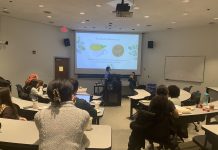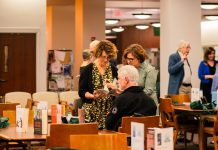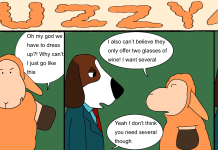Williamsburg City Council unanimously passed eight proposed ordinances that implement part of the 2013 Comprehensive Plan April 11. The Comprehensive Plan, approved by the council in January, aims to foster a revitalization of Williamsburg’s downtown near Market Square, Prince George Street, Armistead Street and surrounding areas.
The decision was made after a public meeting, during which students and residents addressed the council’s five members about the plan’s measures, including the elimination of the housing density gap and rezoning certain areas of the city, allowing for the creation of new retail and residential spaces.
Outgoing Student Assembly President Curt Mills ’13 strongly supported the proposed motions, arguing the plan will create new business and housing options while improving town-gown relations.
“I think this [plan] will be overwhelmingly popular with students and with residents,” Mills said. “Students, retirees, young professionals and with everyone I’ve talked to, this seems to be very popular.”
SA Sen. Jimmy Zhang ’15 and outgoing SA director of Road to Richmond Keenan Kelley ’14 also spoke to the council in favor of the proposed ordinances, saying the changes would benefit both students and the community as a whole.
Several citizens spoke against the measures and argued a new downtown will deteriorate Williamsburg’s established architectural character and historic value.
Terrence Wheel, a city resident, voiced concern that new developments would not be constructed to match surrounding buildings on campus and in Colonial Williamsburg. Another resident argued the development of rental housing would decrease the value of existing real estate.
“Rental units lead to a transient community; they lack the investment homeowners have,” Counselor’s Close resident Betsy Spence said. “Adjacent neighborhoods like Counselor’s Close would suffer immediate negative consequences and cause reduction in home value over time”
Another resident pointed out the that acquisition of the Hospitality House solved the problem of housing shortages for College students, and argued new developments would be unnecessary. Several community members also brought up concern that new housing could cause noise and parking problems in the neighborhoods surrounding the College.
One ordinance allows for the development of the field by Scottland Street, to turn it into a park. Several residents from Harriett Tubman Street spoke against the motion. One resident opposed to the plan called the land unsuitable for use, due to drainage that accumulates in the field.
“It’s very marshy, it floods when it rains and the hills are steep,” Harriett Tubman Drive resident Laurie Wehle said. “It also has storm drainage pipes and grills.”
After public discussion ended, the members of the council gave their thoughts on the proposed ordinances and the implementation of the Comprehensive Plan.
Mayor Clyde Haulman spoke positively of the plan, echoing other proponents of the plan. He and Vice Mayor Paul Freiling ’83 brought up the moderate nature of the plan and pointed out that new developments will still have height restrictions.
Council member Scott Foster ’10 J.D. ’14 countered the argument that new developments will subtract from Williamsburg’s ambiance, saying that low density restrictions have actually driven people out of the area. He also refuted an earlier statement that renters are less dedicated community members.
“I myself am a renter, and just because someone lives in a rental unit does not disconnect their care and hope for the community,” Foster said.
The council’s other two members — Judith Knudson and Douglas Pons — expressed similar opinions.
The Council unanimously approved the measures. More components of the Comprehensive Plan will be discussed and implemented in the coming months.



































